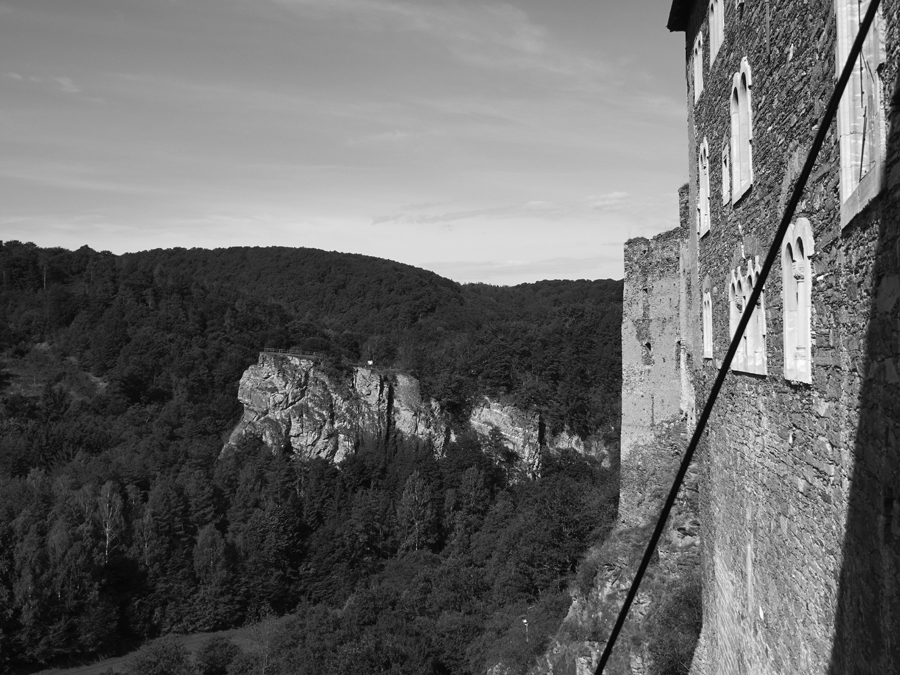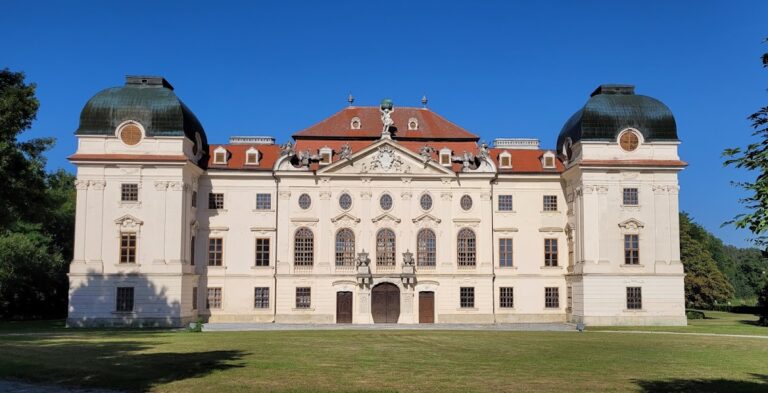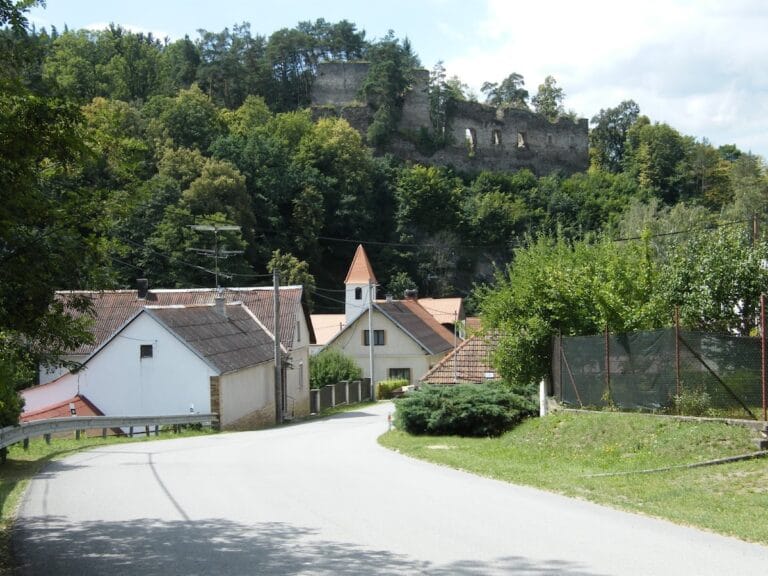Hardegg Castle: A Medieval Fortress in Austria
Visitor Information
Google Rating: 4.5
Popularity: Low
Google Maps: View on Google Maps
Official Website: www.burghardegg.at
Country: Austria
Civilization: Unclassified
Remains: Military
History
Hardegg Castle is situated in the municipality of Hardegg in Austria. This fortress was built by medieval European nobility during the early stages of Austria’s development as a region of contested borders and feudal domains.
The first known mention of Hardegg Castle dates back to 1145 in a donation record witnessed by a noble named Otto von Hardeck. Originally, it was a modest border fortress held by the counts of Plain and Hardegg. Over time, this early structure came under the control of the Magdeburg-Hardegger family, who expanded it significantly through the late 1200s. By the end of the 13th century, Hardegg Castle had grown to become the largest castle in Lower Austria’s Enns river area. This period transformed the stronghold into a key administrative center for the County of Hardegg beginning in 1294.
In the late 15th century, the County of Hardegg achieved direct imperial status within the Holy Roman Empire, a status known as reichsunmittelbar, meaning it was subject only to the Emperor rather than local lords. Following the death of Count Michael of Hardegg and Magdeburg without heirs in 1499, the castle and its lands passed to the Habsburg dynasty. The Habsburgs granted Hardegg Castle to the Prueschenk brothers from Stettenberg, elevating them to Imperial Counts of Hardegg and Machland. Shortly after, in 1502, Heinrich Prueschenk was given the right to mint silver coins, reflecting the estate’s growing economic importance.
Around the same time, Ulrich von Hardegg (1483–1535), a member of this noble lineage, expanded his titles by purchasing the County of Glatz in 1501. Through his marriage to Sidonia von Münsterberg-Oels in 1515, he also connected the Hardegg family to the prominent estates in Silesia.
In the mid-1600s, ownership of the castle passed to the Khevenhülller-Metsch family. They lived there until 1730 before relocating to Riegersburg Castle, not far from Hardegg. After their departure, Hardegg Castle was largely abandoned and gradually fell into ruin. The town of Hardegg suffered a serious fire in 1764, damaging many buildings. Following this disaster, locals were allowed to take stones and timber from the derelict castle to reconstruct homes and other structures in the town.
Revival of the castle began in 1878 under Johann Carl von Khevenhülller-Metsch, a former companion of Emperor Maximilian of Mexico. He initiated restoration efforts to rebuild the fortress. As part of the renovations, a family crypt was created beneath the castle chapel, designed by the architect Carl Gangolf Kayser, who had previously served as Maximilian’s court architect. During this period, a museum dedicated to Emperor Maximilian was also established inside the castle.
In the 20th century, ownership of Hardegg Castle passed through inheritance to the Pilati von Thassul zu Daxberg family, who continue to hold the property. The castle has also appeared as a filming location for medieval-themed productions, including the German film “Narziss und Goldmund,” released in 2018.
Remains
Hardegg Castle occupies a strategic hilltop overlooking the valley of the Thaya (Dyje) river near Austria’s border with the Czech Republic. Its medieval layout is typical of a fortress designed to blend residential living with defensive needs. The castle complex includes a tall tower, a residential palace (palatium), and a chapel, each added or developed across various historical periods of expansion, primarily under the Magdeburg-Hardegger family.
The original small fortification was greatly enlarged by the late 13th century, making Hardegg the largest castle in the region at that time. Its defensive structures originally comprised multiple towers and buildings designed to protect inhabitants and control the surrounding territory. The walls and towers were constructed using local stone and traditional medieval building techniques, emphasizing solidity and height for vantage points.
Beneath the chapel, a family crypt was built during the late 19th-century restoration overseen by Johann Carl von Khevenhülller-Metsch. This crypt was designed by Carl Gangolf Kayser, a notable architect who had served Emperor Maximilian, adding historical and architectural significance to the castle’s underground spaces.
After the castle’s abandonment in the 18th century, significant portions deteriorated. Following a destructive fire in Hardegg town in 1764, townspeople were authorized to remove stone and timber from the castle to assist in the town’s rebuilding, which contributed to the castle’s ruinous state. Consequently, some of the original fortifications and buildings partially collapsed or were dismantled.
Restoration efforts beginning in 1878 focused on important structural repairs and partial reconstructions to preserve the fortress’s integrity. The castle was adapted to house a museum honoring Emperor Maximilian of Mexico, reflecting the personal connection of the Khevenhülller-Metsch family to the emperor.
Today, Hardegg Castle is recognized as a protected heritage site in Austria under the identification number BDA 11996. Its preserved components—tower, palace, chapel with crypt, and reconstructions—stand as a record of its multifaceted history of medieval military, administrative, and noble family use. The castle’s position near other nearby castles such as Riegersburg, Karlslust, Kaja, Fronsburg, and the Czech ruin Nový Hřadek situates it within a landscape rich in medieval architecture and frontier history.










